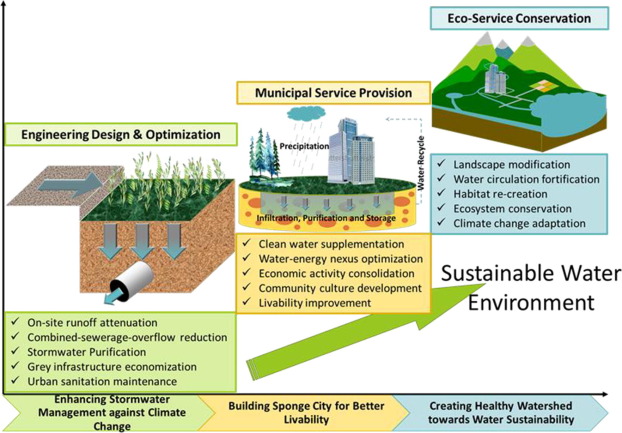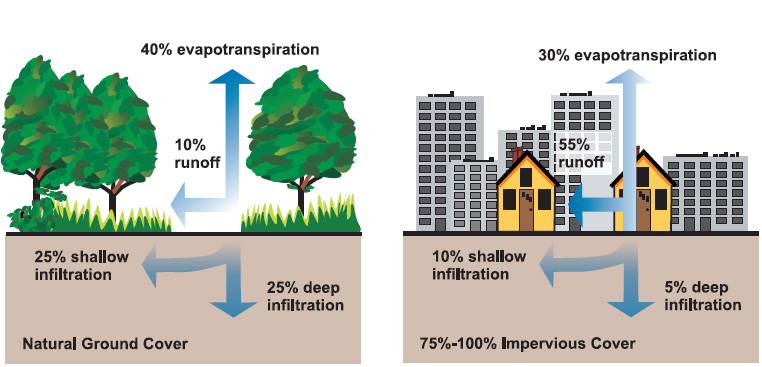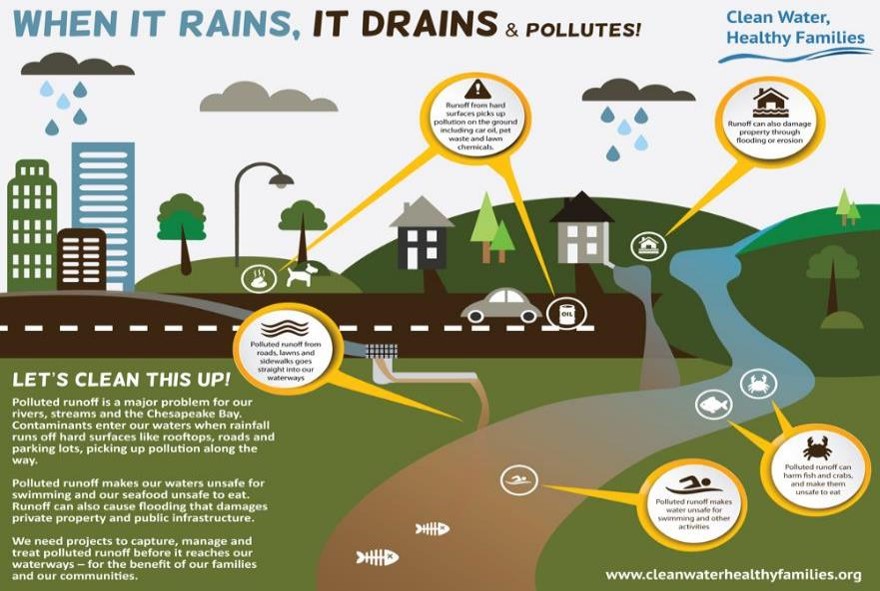Introduction:
Water is one of our most precious resources, vital for all life on Earth. However, rapid urbanization, industrialization, and climate change have placed significant stress on water bodies, degrading water quality globally. Traditional methods of managing stormwater runoff, such as concrete channels and underground pipes, often contribute to pollution and habitat destruction. In response, there has been a growing recognition of the importance of green infrastructure in enhancing water quality. Green infrastructure offers a sustainable approach that mimics natural processes to manage stormwater, reduce pollution, and improve overall water quality.
Understanding Green Infrastructure:
Green infrastructure refers to a network of natural or semi-natural systems designed to manage stormwater and provide multiple environmental benefits. Unlike conventional “gray” infrastructure, which relies on engineered systems, green infrastructure utilizes vegetation, soils, and natural processes to manage water and create healthier urban environments.
Key Components of Green Infrastructure:
1. Permeable Pavements: Permeable pavements allow rainwater to infiltrate through the surface, reducing runoff and preventing pollutants from reaching water bodies. Materials such as pervious concrete, permeable pavers, and porous asphalt are commonly used to create these surfaces.
2. Green Roofs: Green roofs consist of vegetation planted on building rooftops, which absorb and retain rainwater, reducing runoff and filtering pollutants. They also provide insulation, reduce energy consumption, and create habitat for wildlife.
3. Rain Gardens: Rain gardens are shallow depressions planted with native vegetation designed to capture and absorb stormwater runoff. They help to filter pollutants, recharge groundwater, and enhance biodiversity.
4. Bioswales: Bioswales are vegetated channels or depressions designed to slow, collect, and filter stormwater runoff. They are often planted with native vegetation and use engineered soils to enhance water infiltration and pollutant removal.
5. Urban Forests and Riparian Buffers: Trees and vegetation in urban forests and riparian buffers help to intercept rainfall, reduce erosion, and filter pollutants before they reach water bodies. They also provide habitat for wildlife and contribute to overall ecosystem health.
Benefits of Green Infrastructure for Water Quality:
1. Pollution Reduction: Green infrastructure effectively captures and filters pollutants such as sediment, nutrients, heavy metals, and pathogens from stormwater runoff, preventing them from entering water bodies and degrading water quality.
2. Flood Mitigation: By slowing down and capturing stormwater runoff, green infrastructure helps to reduce the risk of flooding in urban areas, protecting both property and public safety.
3. Groundwater Recharge: Green infrastructure promotes infiltration of rainwater into the ground, replenishing groundwater supplies and maintaining baseflow in streams and rivers, which is essential for sustaining aquatic ecosystems.
4. Habitat Creation: Green infrastructure features such as rain gardens, bioswales, and urban forests provide habitat and food sources for wildlife, contributing to biodiversity conservation in urban environments.
5. Community Benefits: Green infrastructure enhances the aesthetic appeal of neighbourhoods, creates recreational opportunities, improves air quality, and promotes community engagement and stewardship of natural resources.
Case Studies:
1. Philadelphia, Pennsylvania, USA: The Philadelphia Water Department has implemented a comprehensive green infrastructure program to manage stormwater and reduce combined sewer overflows. By incorporating green roofs, rain gardens, permeable pavements, and tree plantings, Philadelphia has transformed vacant lots and streetscapes into green spaces that capture and treat stormwater, improving water quality in rivers and streams.
2. Singapore: Recognizing the importance of water management in a densely populated urban environment, Singapore has integrated green infrastructure into its urban planning strategies. The city-state has implemented measures such as rain gardens, bioswales, and rooftop gardens to enhance water quality, reduce flooding, and create sustainable living spaces.
Challenges and Considerations:
While green infrastructure offers numerous benefits for water quality and urban resilience, its widespread implementation faces challenges such as initial costs, maintenance requirements, land availability, and regulatory barriers. Additionally, effective planning, design, and community engagement are essential for maximizing the benefits of green infrastructure and ensuring long-term success.
Conclusion:





